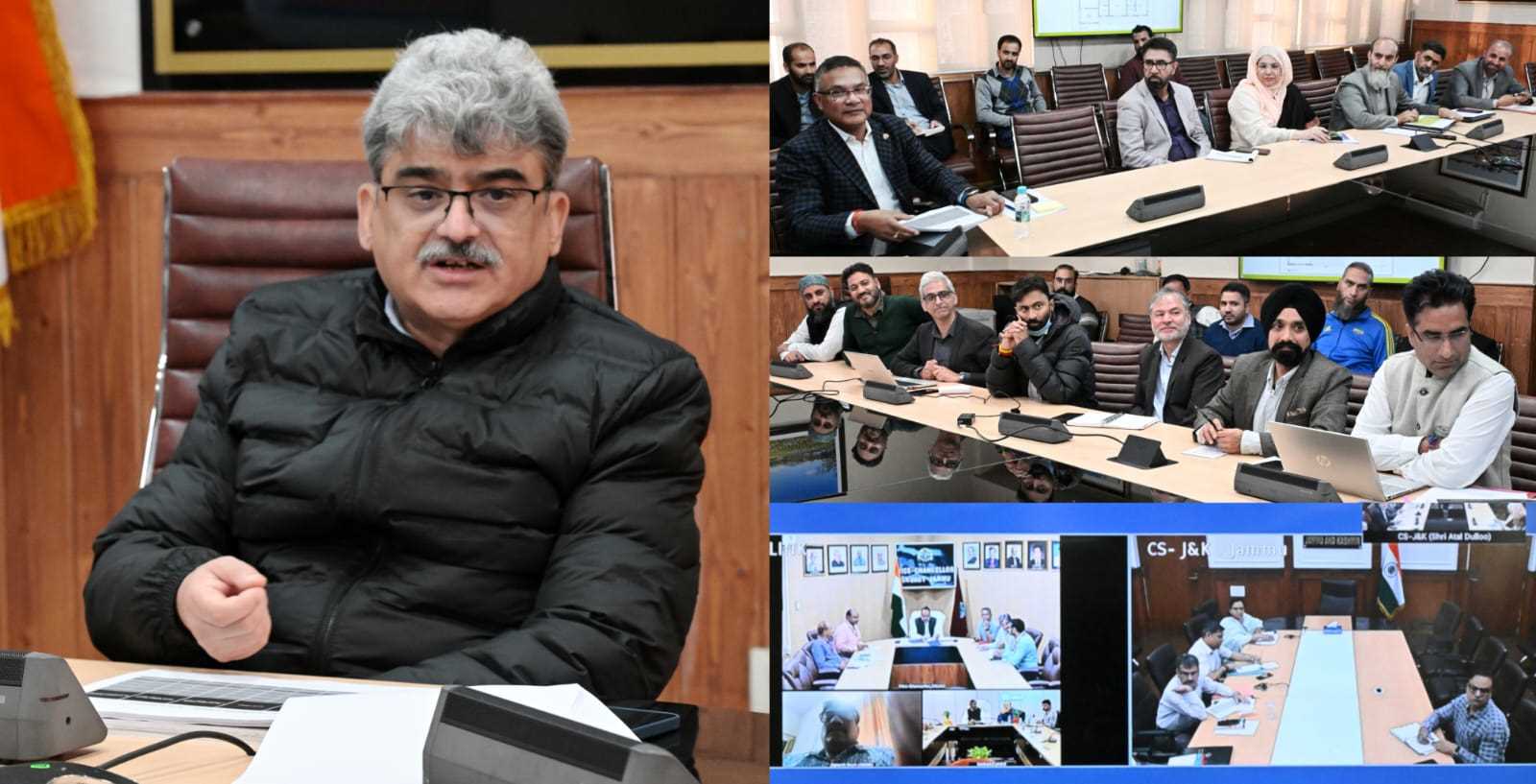
Chief Secretary Atal Dulloo chaired a high-level meeting of the Agriculture Production Department (APD) to review strategies for enhancing milk and mutton production across Jammu & Kashmir. Emphasizing the potential for growth, value addition, and entrepreneurship, he urged the department and local entrepreneurs to transform dairy and livestock sectors into engines of rural employment.
The meeting, attended by senior officials including ACS Shailendra Kumar, SKUAST-Jammu Vice Chancellor, and Managing Directors of HADP and Dairy Development, focused on increasing organized milk production from the current 4% to 20% over the next 5–7 years. Plans include expanding Artificial Insemination (AI) coverage, securing High Genetic Merit bulls, establishing sexed semen facilities, and setting up milk processing and chilling units in every district.
J&K currently produces 28.75 lakh metric tonnes of milk annually, with per capita availability at 577 grams per day, above the national average. The region also has 43.68 lakh sheep and 22.5 lakh goats, yielding 370 lakh kg of meat and 80 lakh kg of wool against a local demand of 545 lakh kg of meat. To bridge this gap, advanced breeding technologies such as Embryo Transfer Technology (ETT) and Multiple Ovulation and Embryo Transfer (MOET) are being introduced, along with plans for Embryo Generation Labs and ETT facilities in every district.
Chief Secretary Dulloo directed the department to work in mission mode to create replicable success stories, focusing on scientific processing, value addition, and skill-building for veterinarians and para-veterinarians to ensure sustainable growth and rural livelihoods.
Chief Secretary Atal Dulloo chaired a high-level meeting of the Agriculture Production Department (APD) to review strategies for enhancing milk and mutton production across Jammu & Kashmir. Emphasizing the potential for growth, value addition, and entrepreneurship, he urged the department and local entrepreneurs to transform dairy and livestock sectors into engines of rural employment.
The meeting, attended by senior officials including ACS Shailendra Kumar, SKUAST-Jammu Vice Chancellor, and Managing Directors of HADP and Dairy Development, focused on increasing organized milk production from the current 4% to 20% over the next 5–7 years. Plans include expanding Artificial Insemination (AI) coverage, securing High Genetic Merit bulls, establishing sexed semen facilities, and setting up milk processing and chilling units in every district.
J&K currently produces 28.75 lakh metric tonnes of milk annually, with per capita availability at 577 grams per day, above the national average. The region also has 43.68 lakh sheep and 22.5 lakh goats, yielding 370 lakh kg of meat and 80 lakh kg of wool against a local demand of 545 lakh kg of meat. To bridge this gap, advanced breeding technologies such as Embryo Transfer Technology (ETT) and Multiple Ovulation and Embryo Transfer (MOET) are being introduced, along with plans for Embryo Generation Labs and ETT facilities in every district.
Chief Secretary Dulloo directed the department to work in mission mode to create replicable success stories, focusing on scientific processing, value addition, and skill-building for veterinarians and para-veterinarians to ensure sustainable growth and rural livelihoods.
© Copyright 2023 brighterkashmir.com All Rights Reserved. Quantum Technologies